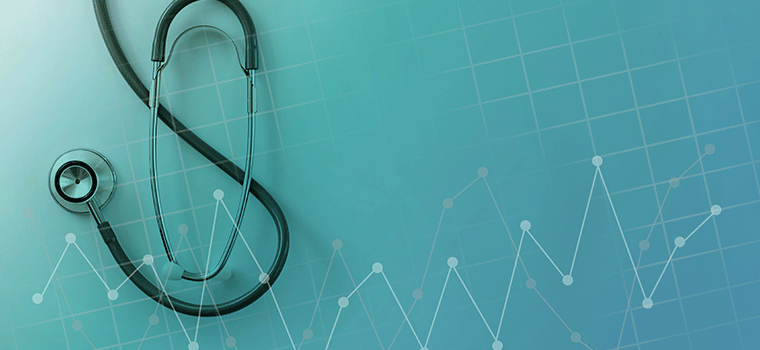By: Pranjal Bora, Head of Product Management, Digital Authority Partners
Digital technology plays a key role in health care. Its influence is only becoming more and more pronounced. The right digital technology can ensure client confidentiality, speed up medical procedures and track patient information more accurately.
Patient safety is a key global theme, especially with the ongoing Covid-19 pandemic. World Patient Safety Day took place on September 17, 2021 to increase awareness of patient safety. Though it was primarily aimed toward protecting mothers and newborns, it also brought attention to general patient safety that could be prevented through the use of digital technology.
How Technology is Used in Healthcare
Digital technology has already had a number of benefits in the healthcare industry and is set to increase in the future. Some of the more prominent areas where technology can be observed in healthcare are listed below.
This list includes current applications, but each area will be expanded significantly in years to come as the digital technology gets more sophisticated. We have only scratched the surface of each of these five sectors.
1 – Administrative
The bureaucratic nature of modern healthcare places a huge burden on staff. Far more time is spent on administrative work in comparison to actual consultations and medical procedures. Digital technology helps to streamline the workload in a number of ways. Wait times can be predicted, staff can be asked to fill out preliminary questionnaires, certain information can be auto-filled from one database to another and staff or patient scheduling can be improved upon.
2 – Surgery
Robots and artificial intelligence (AI) can do a better job at expensive and delicate surgeries and are currently being integrated into surgical procedures more frequently. These robots come in a variety of shapes and sizes and don’t suffer from fatigue, stress, or anxiety like so many overworked surgeons. This has an obvious impact on the safety of patients as it decreases human error and improves precision. They can also free up time schedules for surgeons and reduce operational costs of surgical clinics.
3 – Mental Health
An area known as telemental health allows patients with mental health issues to have easy access to specialists outside of office access. It is a growing field with multiple applications. Virtual reality (VR) products could also potentially allow those suffering from PTSD to face their fears and come to terms with them. Mental health VR therapy is not currently available to the public, though it’s not that far away.
4 – Research & Development
Machine learning models can be used to assist drug manufacturers and other organizations to predict the onset of certain diseases and formulate substances to combat them. Such models provide added precision so companies can identify exactly what components in a given substance are working and then apply them to the correct demographic.
5 – Wearable technology
Wearable technology will allow more accurate and frequent tracking of a wide variety of health metrics, from brainwaves during sleep to heart rate throughout the day. These wearables can also help prevent a very common theme found in the medical industry: incorrect diagnosis. When a patient undergoes a medical event, it will be easier to examine key biological metrics in the immediate time interval leading up to it.
Other Technologies to Improve Patient Security
A critical area in terms of patient security revolves around digital protection and cybercrime. 2020 and 2021 have both seen sharp increases in healthcare-related cybercrime. In fact, it’s an area that is growing each year despite the protections in place due to increases in attack vectors. There are too many network vulnerabilities and areas of exploitation.
Healthcare cybercrime is on the rise despite the use of strong passwords, limitation of network access, limitation of file access, staff awareness programs and other essential security measures. Technological innovation is necessary to prevent ransomware and other attacks. Legacy systems should be changed or updated, including both hardware and software. Hackers know how to exploit vulnerabilities in older versions.
There is also an awareness that more staff need to be trained in digital safety. A particular area of interest would be implantable medical devices with real-time information recording, which allow more rapid response and a more accurate assessment of a patient’s condition. Registries and databases will also need to be created to support data collection and assessment of conditions, improving diagnosis of given procedures, implants and medications.
As such systems expand, they can further serve to collect information on a vast rate of biological vectors to enhance reporting by wide margins and improve diagnoses. However, they can only progress at a rate at which the IT system evolves to collect and track such information intelligently. Collection of all metrics at too frequent intervals would simply result in an unworkable amount of information without identifying what is truly relevant to an individual case.
Dealing with Incorrect Patient Diagnoses
A huge issue within the medical industry is incorrect diagnoses. They can occur due to multiple reasons. The person reading a report may have been fatigued or simply skimmed the file without looking too closely. Or perhaps the data was not filled out or recorded correctly.
Either way, AI can serve to prevent incorrect diagnoses by cross-referencing medical information against other databases so it is checked for accuracy. According to some healthcare reports, medical error is the third leading cause of mortality, accounting for 10% of all US deaths. Algorithms that scan diagnosis databases for errors could greatly alleviate this problem.
This algorithm could also identify which people needed repeat testing for certain issues. It would be a huge improvement, though not a panacea. Data is sometimes unavailable or improperly reported.
The Future of Patient Health Safety
There is little doubt that the future of improved patient health safety will be a function of digital technology. AI can operate far more efficiently with zero percent error rates for correct diagnosis and for accurate information cross-referencing.
What could potentially take a human thousands of hours to do manually can be completed in a fraction of the time using software scrapers.
We will see a vast improvement in patient safety through the increased use of digital technology.





